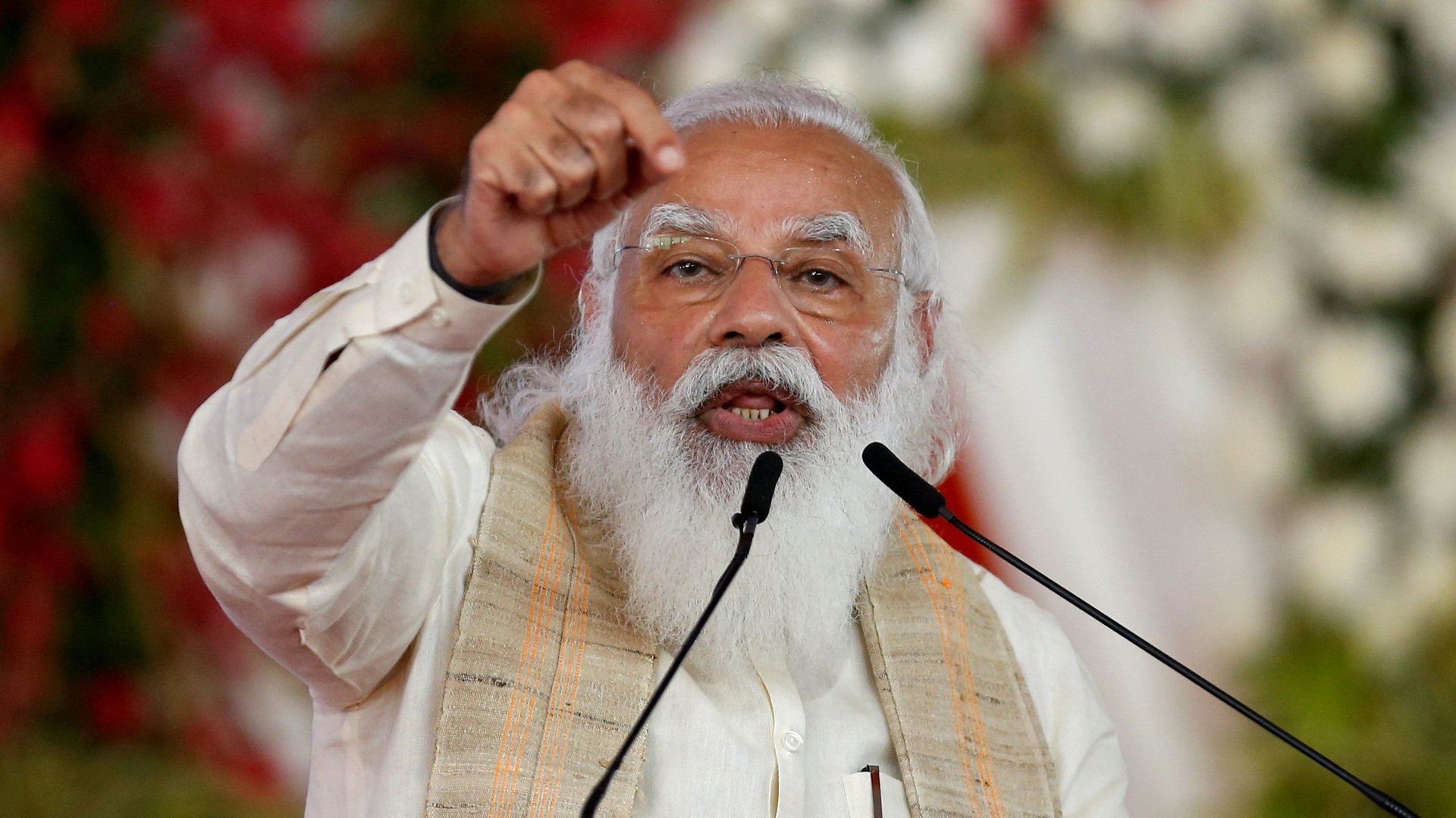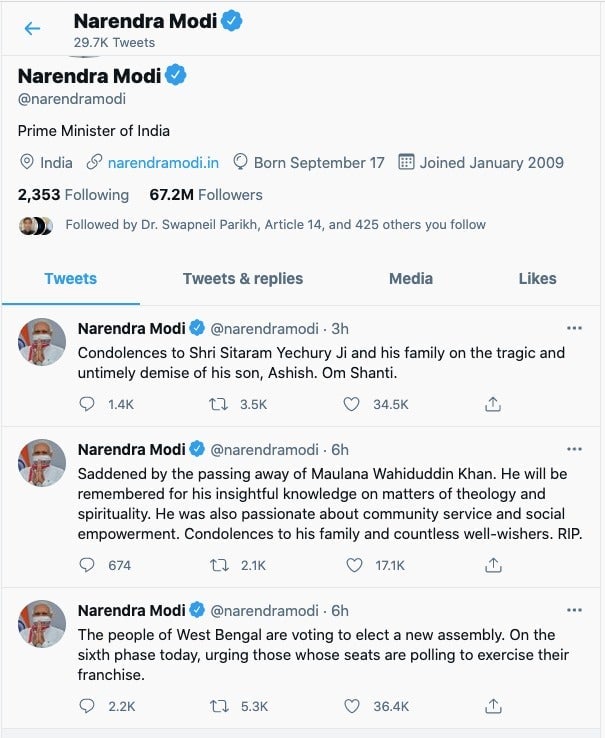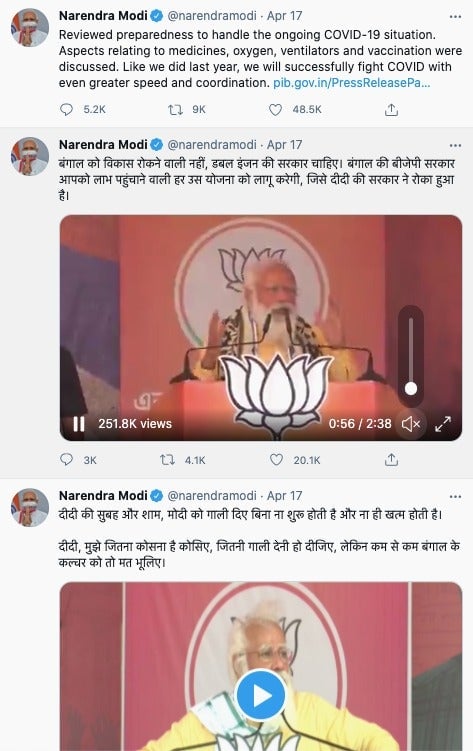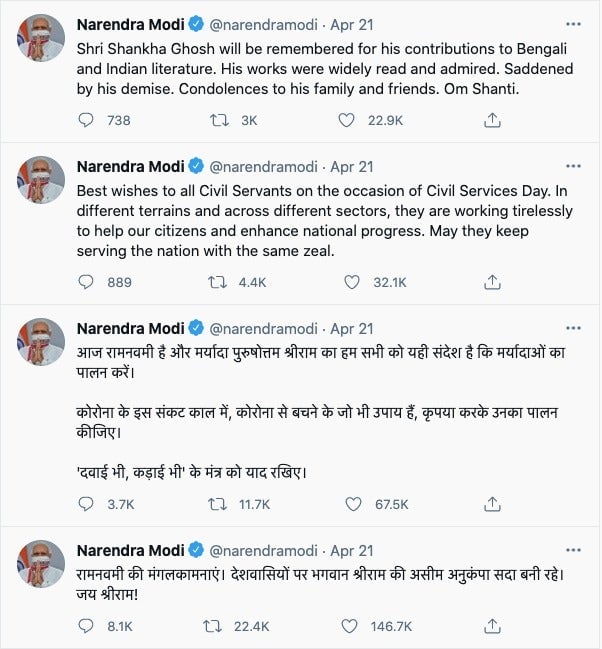Modi’s Twitter feed is a live example of the paradox in India’s Covid-19 battle
A scroll through prime minister Narendra Modi’s Twitter feed offers a glimpse into India’s battle with a raging second wave of Covid-19. As the country grapples with deaths, and shortages of oxygen, vaccine, and drugs, parts of the country are also in the midst of a heady political battle.


A scroll through prime minister Narendra Modi’s Twitter feed offers a glimpse into India’s battle with a raging second wave of Covid-19. As the country grapples with deaths, and shortages of oxygen, vaccine, and drugs, parts of the country are also in the midst of a heady political battle.
Modi’s Twitter account today (April 22) is a constant stream of condolences for noted Indians who lost their lives to Covid-19, peppered with excitement over the people in the state of West Bengal exercising their voting rights.

Modi and his aide, home minister Amit Shah, have been heavily criticised for conducting mass rallies in West Bengal, while India is in the grip of a catastrophic Covid-19 surge. In under a month, India’s coronavirus infections went from approximately 60,000 daily to over 300,000 a day.

The current government of Bengal had requested India’s election commission to wrap up the remaining two phases of the election together. The commission denied this request.
Meanwhile, the election commission has made special provisions for Covid-positive patients to cast their votes.
Besides election rallies, the state of Uttarakhand also hosted the Kumbh Mela, a mass Hindu gathering of nearly 30 million people, in the month of April. Modi had appealed to Hindu ascetics to make the festival symbolic 18 days after it began, and most official Hindu seer groups decided to heed his advice.
Yet, on April 21, as Hindus observed Ram Navami, the birth of their god Ram, over 80,000 people took a dip in the river Ganga where Kumbh was earlier being observed. This is still a fraction of the millions that were expected to take the shahi snan (royal dip), but it was nowhere near ideal during a fast-spreading, deadly pandemic.
On Twitter, Modi called for restraint while wishing his followers on the occasion of Ram Navami.
